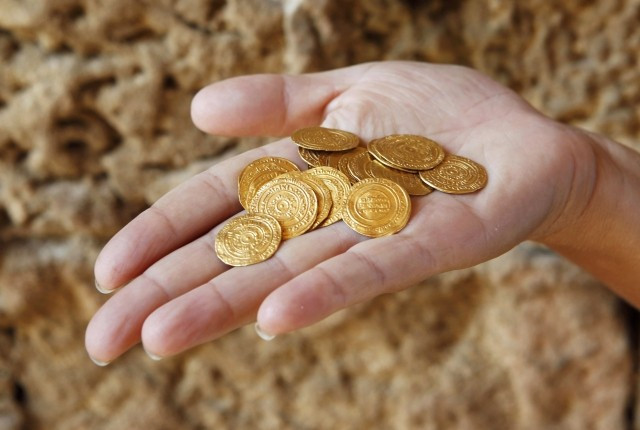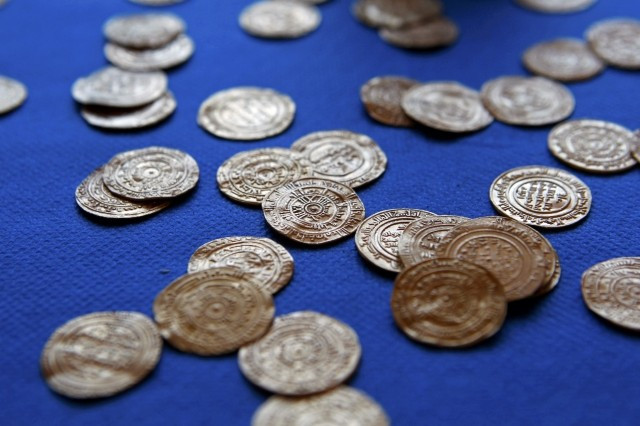Crusaders' Gold Coins Discovered in Ancient Israeli Fortress Ruins [PHOTOS]
A hoard of 108 gold coins dating to the time of Crusades kept in a small mud jug has been discovered at the fortress ruins of Apollonia National Park in Israel.
Israeli archaeologists from Tel Aviv University (TAU) and Israel's Nature and Parks Authority found the jug of coins while working on the ongoing joint Apollonia-Arsuf Excavation Project at the ancient site, which is located on a cliff overlooking the Mediterranean Sea north of Tel Aviv, FoxNews.com reported.
"All in all, we found some 108 dinals and quarter dinals, which makes it one of the largest gold coin hauls discovered in a medieval site in the land of Israel," Prof Oren Tal, chairperson of Tel Aviv University's Department of Archaeology and Ancient Near Eastern Cultures, told FoxNews.com.
The coins, which were found on 25 June, bear names of local sultans and were probably hidden by a Crusader's leader upon an impending danger. The coins are said to be from the 10th or 11th century and were in use until the 13th century, according to archaeologists.
Formerly called Tel Arsuf, the Apollonia National Park was an ancient settlement of Crusaders between from 1101 until its annihilation by Muslim invaders in 1265.
According to TAU, the presence of the Crusaders left its mark on the ancient city Arsuf.
"Large parts of it were re-planned, while extensive fortifications, private and public buildings, as well as a castle were erected," TAU describes about the site.
Tel Arsuf was never settled after its destruction in the 13th century. The abandonment led to a unique archaeological setting in which the Crusader layers were left largely undisturbed and thus are highly suitable for intensified archaeological research, according to TAU.
Crusader city discovered under an old Israeli port
In June last year, archaeologists unearthed an old city of Crusaders, which had been hidden for centuries under the port city of Acre along the Mediterranean Sea in Israel.
The city was believed to have been last inhabited in 1291, the year the Crusaders' state power fell to a Muslim army from Egypt.
An arched passageway underground, graffiti of medieval times on walls, a cobblestone street and a row of shops that probably sold souvenirs for pilgrims, ampoules for holy water, clay figurines and more were excavated.
Check out below pictures of recently discovered Crusaders' gold coins in Israel:




© Copyright IBTimes 2025. All rights reserved.



















